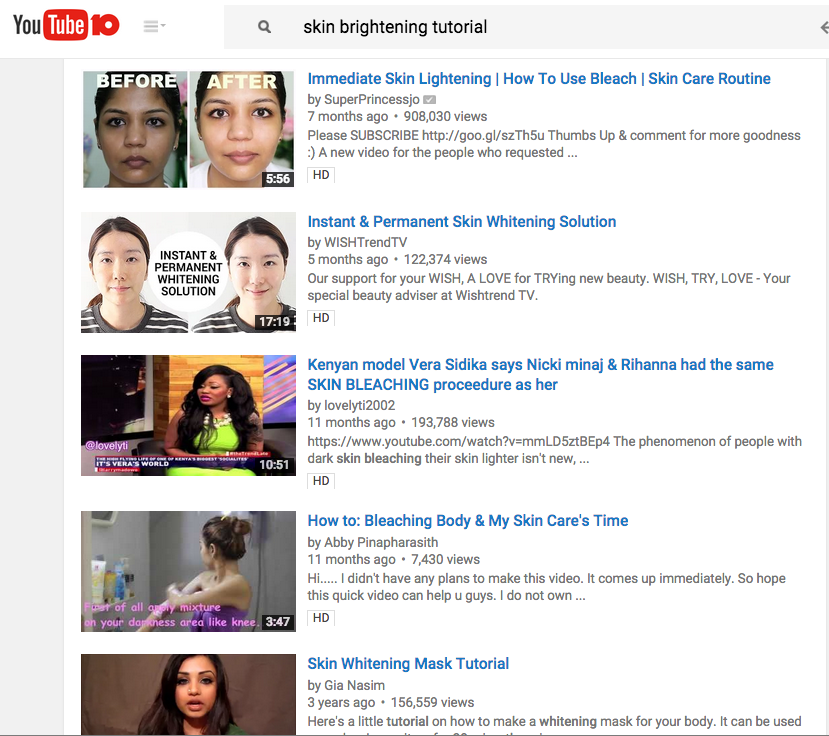During my junior year of high school, my friend Kimberly and I stood at a Walmart deciding whether or not we wanted to buy potato wedges from the deli and the ladies behind the cash register called us over. They asked us what ethnicity we were. “I’m Chinese and she’s Vietnamese,” I replied and they looked surprised.
“Wow you don’t look Asian, we thought you were Filipino or something.” At this point I was a little peeved and we bought our food and left. Other than the gross and ignorant implication that Filipino people weren’t asian, I was still puzzled because I had never thought about my skin tone being an issue before. What about me made them question my ethnicity? Their curiosity had me questioning my identity. Sure my skin was dark. I was a trained lifeguard at the time, getting hours of harsh sun exposure everyday.
Flash forward to my trip to Hong Kong last summer. I walked through the large strip mall and everywhere I turned, the women in the advertisements all looked the same. Horrifyingly enough, none of them seemed to resemble me or most of the girls I knew.
Let’s have a look at what we consider the stereotypical image of the Asian woman. Cultural beauty standards require women to be pale, slender and have small feminine features. Not just every ad I saw in Hong Kong catered to those beauty standards, but even the limited Asian American representation in Hollywood fits that image. How we are perceived has a great deal to do with how we portray ourselves. The concept of pale, slender beauty overshadows the enormous diverse palette of skin tones present in the Asian population. In addition to integrating harmful stereotypes, the media also tends to overgeneralize the diverse cultures just by using “Asian” as an umbrella term. As a result, especially in non-Asiatic countries, people tend to only see the East Asian standard of beauty when they visualize an Asian person.
Unfortunately, the idea that Asians have a range of skin colors is still a shock to some. Most East Asian countries like China, Japan, and Korea prefer flawless, porcelain skin. The root of such preferences come from the connection between skin color and socioeconomic status. In a 1967 article about Japanese social perception on skintone, Hiroshi Wagatsuma argues that “from past to present, the Japanese have always associated skin color symbolically with other physical characteristics that signify degrees of spiritual refinement or primitiveness. Skin color has been related to a whole complex of attractive or objectionable social traits.”

Despite the deep-rooted cultural preference for pale skin, the majority of the population would fail to meet beauty standards. The market for skin-whitening products has grown rampant because it preys on consumers’ desire to correct an undesirable skin tone. For example, “Block & White,” a company catering to South East Asia and the Philippines, created an ad where a female skateboarder gets pulled aside by two ladies for a makeover. They realize that it’s not pretty clothes that will beautify her, but rather the skin-brightening product in question. People do realize the insidious message in these types of ads, and have created humorous parodies such as entertainment company 9X’s video about the typical whitening ad found in Indian media. In both of the ads, the women seem more confident after brightening their skin, and immediately drew attention from men.
There’s only so much that can be controlled when it comes to skin tone, such as the level of sun exposure and the use of skin-brightening products. It’s not an uncommon sight in Hong Kong for ladies to be out on a hot sunny day with long sleeves and umbrellas. The portion of the population that are born with naturally tanned skin are faced with a lose-lose situation. They are stuck between being labelled as undesirable or spending the rest of their lives trying to conform to unreasonable standards.
Although the media portrays Asians with a limited range of skin tones, Asians do not fit a specific image. The category “Asian” includes countries like China, India, and the Philippines. Yes, there’s not much that can be controlled when it comes to the color of our skin, but what can be controlled is how we perceive ourselves and our standards of beauty. We can look past all the images on advertisements and start seeing beauty in the skin that doesn’t match the ad.
As a first generation Asian American, I’ve become separated from the culture my parents grew up with. As a consequence, I’ve lost parts of my cultural identity, but I have also distanced myself from those impossible beauty standards. I spend a lot of time in the sun and I tan easily. I get nagged by my relatives for being different from their standard of beauty, but my upbringing in the United States taught me that people of all skin tones can be beautiful and successful. I hold no contempt for my relatives who pester me, but I feel sorry that they are unable to find self worth in a natural image.

Comments are closed.